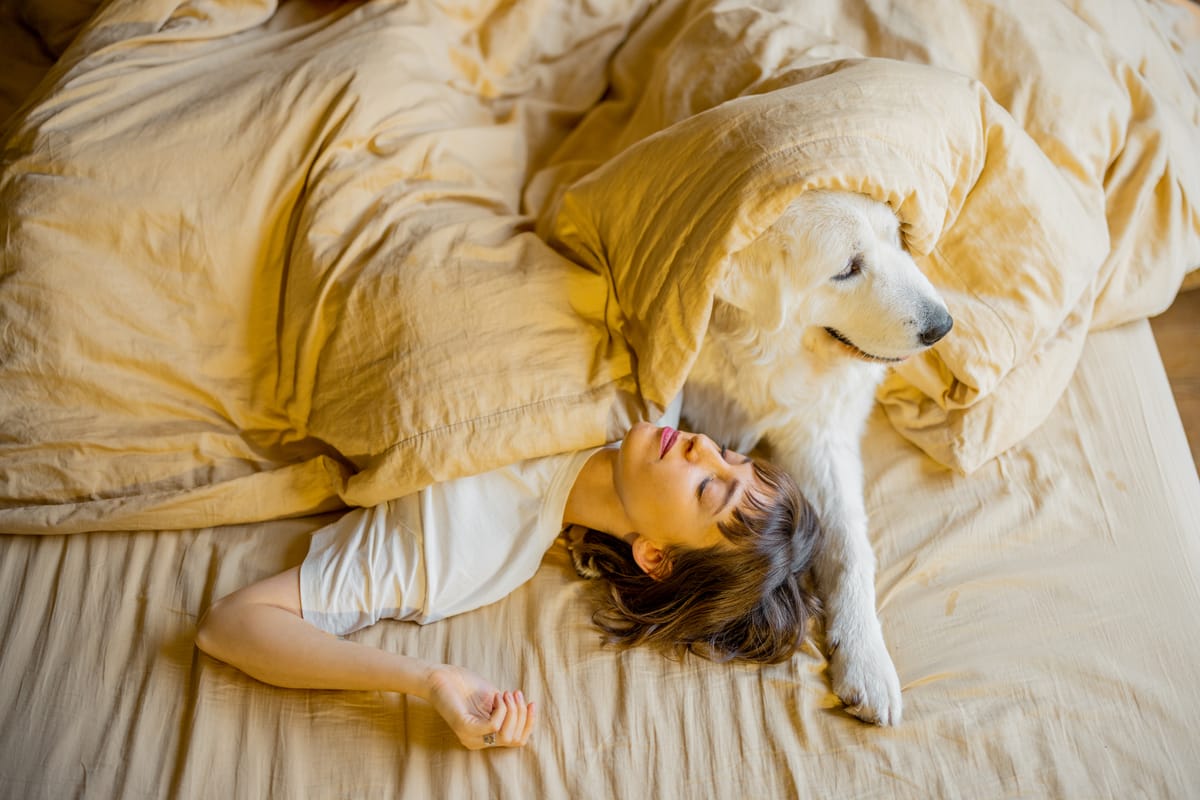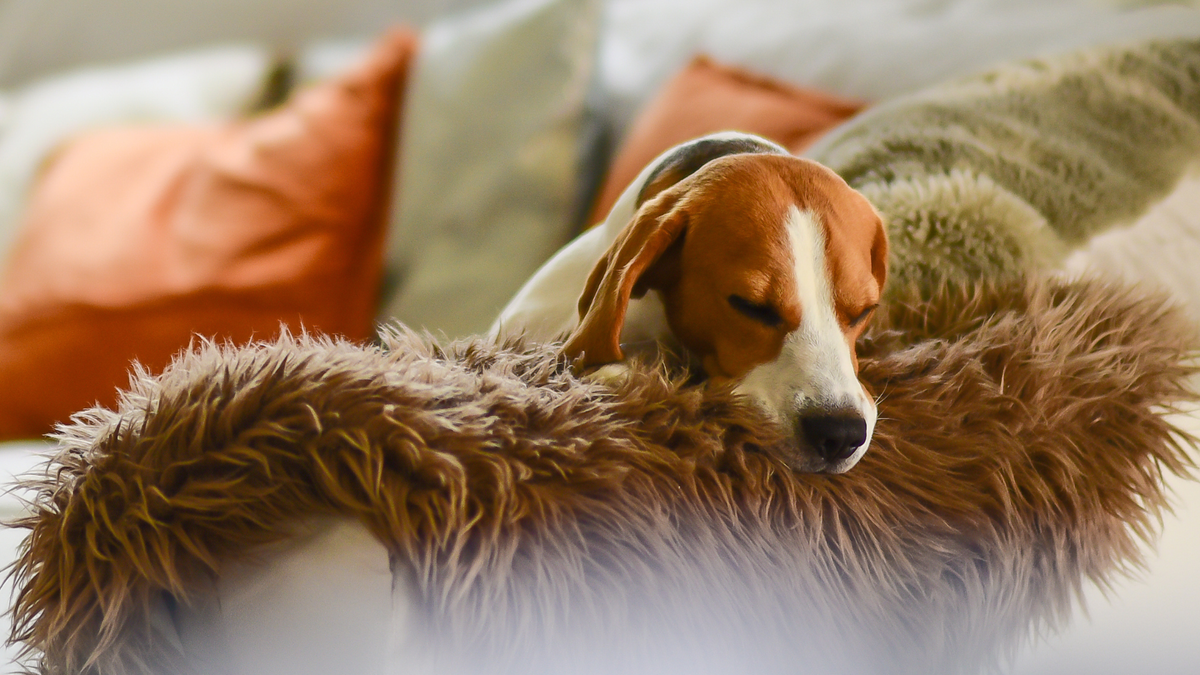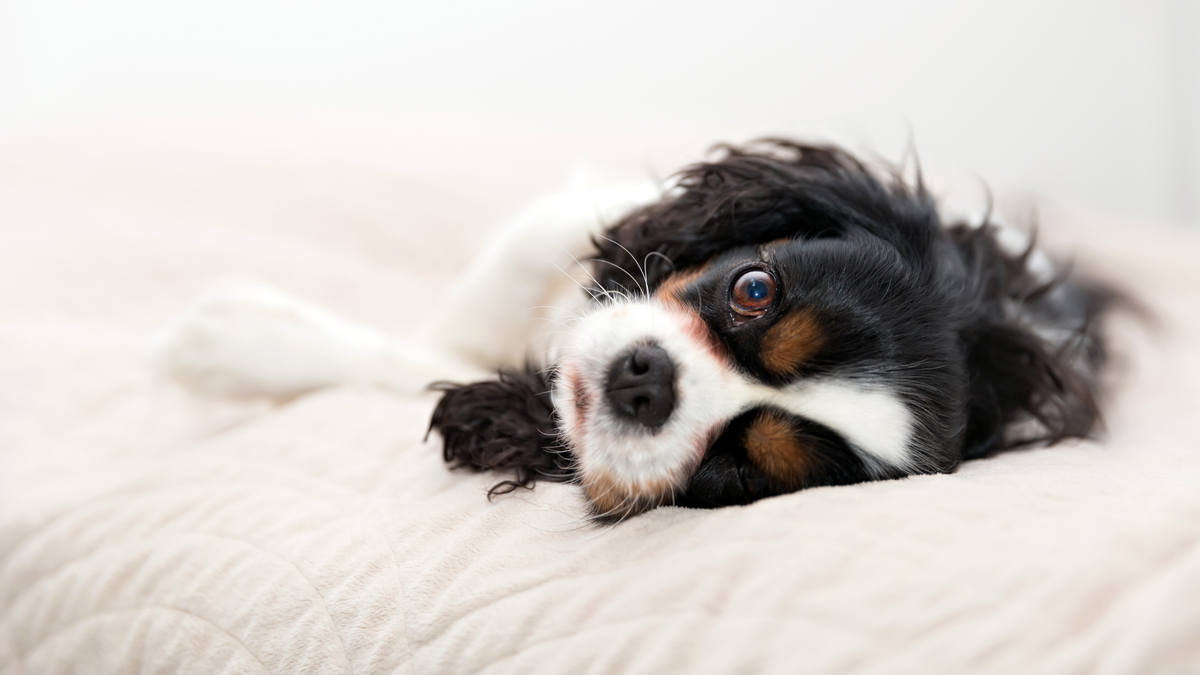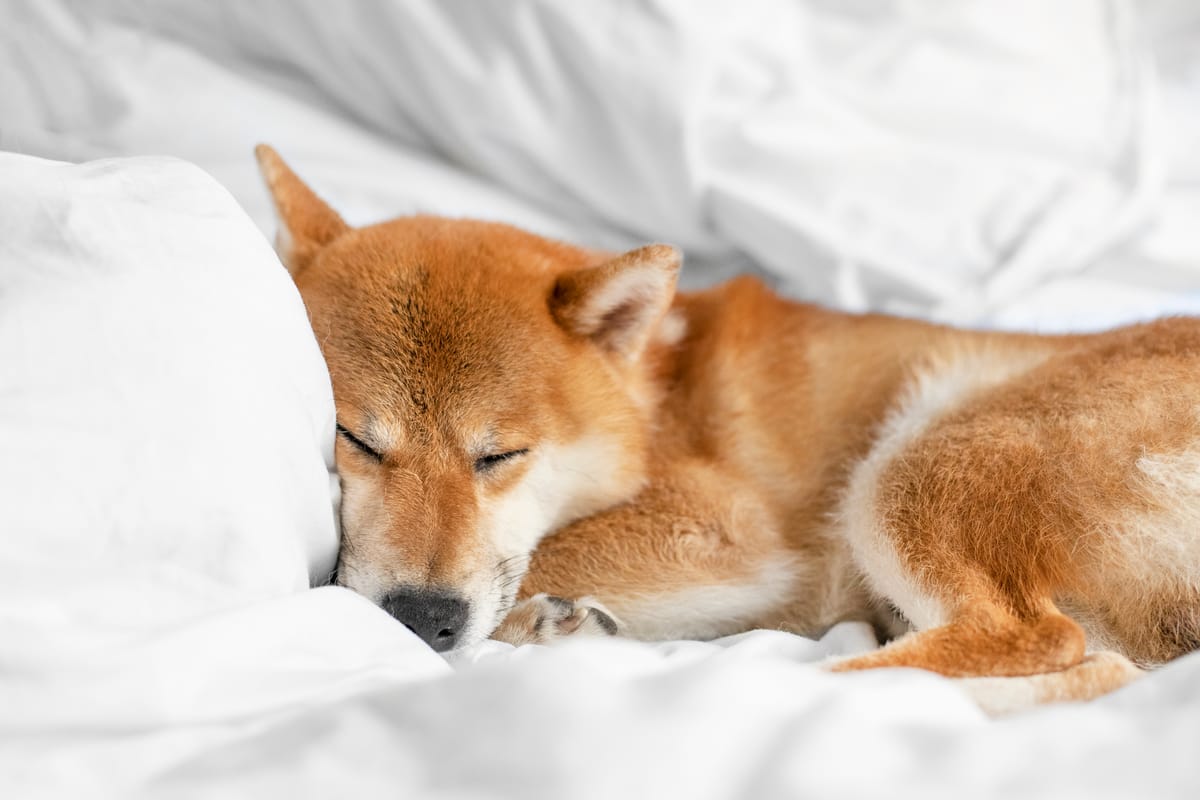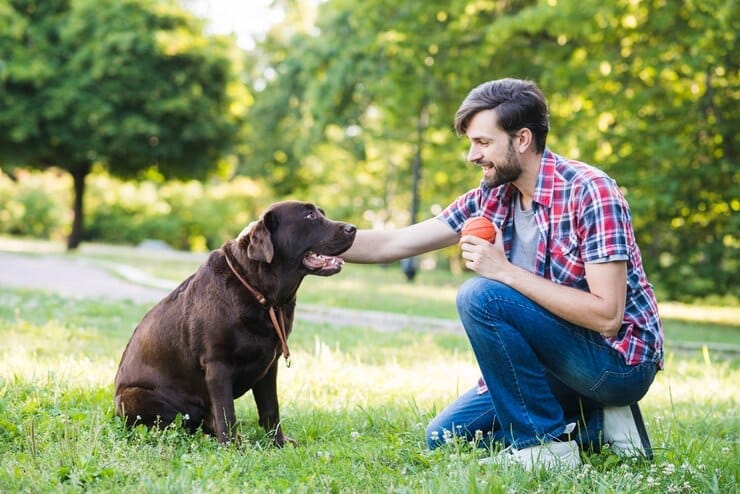Sleeping with their eyes open is a behavior observed in some dogs that can be both fascinating and concerning to pet owners. Dogs are known for their unique sleep patterns, and understanding why some dogs sleep with their eyes open can provide insights into their natural behavior.
It is important to note that not all dogs sleep with their eyes open, and this behavior can vary from breed to breed. Misconceptions and concerns often arise regarding the quality of their sleep and whether they are truly resting. Observing signs and symptoms such as partially open eyes, dilated or fixed pupils, and lack of eye movement can help determine if a dog is sleeping with their eyes open. While this behavior is not necessarily abnormal, pet owners should be aware of any changes or discomfort their dog may exhibit during sleep.
Do Dogs Sleep with Their Eyes Open?
Dogs do not sleep with their eyes open. Despite the myth, it is not true that dogs possess the ability to sleep with their eyes open, unlike some animals such as birds and fish. When dogs sleep, they naturally close their eyes just like humans.
Sleeping with their eyes open would cause discomfort and could potentially lead to dryness or irritation to the eyes. Therefore, dogs need to rest their eyes during sleep in order to promote healthy eye function.
It is important to acknowledge that dogs have different sleeping patterns compared to humans. They have shorter sleep cycles and can be easily awakened from their slumber. Additionally, dogs are more inclined to enter into a light sleep state where they may experience slight twitching or movement, resulting in the false impression that their eyes are open. However, during this time, their eyes are actually closed.
Thus, if you ever come across a dog seemingly sleeping with its eyes open, it is most likely due to a slight movement or twitching during sleep, rather than a conscious effort by the dog to keep its eyes open. Dogs, like humans, require their sleep, and closing their eyes is an essential part of their restful state.

Understanding Canine Sleep Patterns
Ever wondered about the mysterious world of canine sleep patterns? Let's dive into the fascinating realm of understanding how dogs sleep. From the different phases of their sleep to the intriguing phenomenon of rapid eye movement (REM) sleep and non-rapid eye movement (NREM) sleep, we'll explore the captivating aspects of a dog's slumber. Get ready to unravel the secrets behind those adorable closed eyes and those occasional twitching paws.
Phases of Canine Sleep
- Understanding the phases of canine sleep, specifically the Phases of Canine Sleep, is crucial for pet owners. Dogs go through two main types of sleep: Rapid Eye Movement (REM) and Non-Rapid Eye Movement (NREM) sleep.
- During REM sleep, which occurs around 10-20 minutes after a dog falls asleep, there is increased brain activity, rapid eye movements, and dreams. This phase is short-lived.
- NREM sleep consists of four stages, each with varying depths of sleep. In the first stage, dogs start to relax and may exhibit slight movements or twitches. This stage lasts for a few minutes.
- As dogs progress to the second stage of NREM sleep, they enter a deeper sleep state. Their heart rate and body temperature decrease, and they become less responsive to external stimuli. This stage also lasts for a few minutes.
- The third stage of NREM sleep signifies the transition to deep sleep. Dogs become less aware of their surroundings, and their brain waves slow down. This stage persists for approximately 10-30 minutes.
- The fourth stage of NREM sleep brings dogs into the deepest sleep stage. It is during this phase that their body repairs and regenerates. Dogs may experience increased muscle relaxation and reduced responsiveness. The duration of this stage is around 20-30 minutes.
- Following the NREM stages, dogs frequently return to REM sleep. The cycle of NREM and REM sleep repeats throughout the night.
Understanding these different phases of canine sleep is crucial for pet owners. It helps ensure that their dogs are getting adequate rest and enables them to identify any signs of sleep disturbances. Remember to provide your furry friend with a cozy and quiet sleeping area, devoid of distractions or disturbances. Monitoring their sleep patterns and seeking veterinary advice if there are noticeable changes or concerns are essential in ensuring the overall well-being of your canine companion.
Rapid Eye Movement Sleep
Rapid Eye Movement (REM) sleep is a vital phase of sleep for dogs. During REM sleep, dogs go through heightened brain activity and vivid dreaming. Here are some crucial points to comprehend about REM sleep in dogs:
- REM sleep is characterized by Rapid Eye Movement, hence the name. During this phase, dogs' eyes swiftly move beneath their closed eyelids.
- REM sleep is also associated with increased brain activity and muscle relaxation. Dogs may twitch, whimper, or even bark while in REM sleep.
- Dogs dedicate approximately 10-12% of their total sleep time to REM sleep. Puppies and younger dogs generally have a higher amount of REM sleep compared to older dogs.
- REM sleep is critical for dogs' cognitive function and memory consolidation. It aids in processing information and retaining what they have learned while awake.
- Similar to humans, dogs undergo sleep cycles that encompass both REM and non-REM sleep. These cycles repeat throughout the night.
Understanding dogs' sleep patterns, including REM sleep, can assist us in providing them with proper rest and care. It is normal for dogs to experience REM sleep, and it is an essential part of their sleep cycle. If you observe any abnormal behavior during your dog's REM sleep, such as intense twitching or prolonged distress, consulting a veterinarian is advisable to rule out any underlying health issues.
The study of REM sleep in dogs originated in the 1960s when scientists began utilizing electroencephalography (EEG) to monitor brain waves during sleep. This technique enabled them to distinguish between REM and non-REM sleep in dogs. Subsequently, research has advanced our understanding of dogs' sleep patterns and the significance of REM sleep for their overall well-being.
Non-Rapid Eye Movement Sleep
Non-Rapid Eye Movement Sleep (NREM sleep) is an essential phase of canine sleep. During this crucial period, dogs experience a profound and rejuvenating sleep.
In NREM sleep, dogs enter a state of relaxation where their body functions slow down. This phase is characterized by gradual and regular breathing, decreased heart rate, and relaxed muscles. Dogs may also encounter twitching or minor movements during this phase, which is entirely normal.
NREM sleep holds great significance for dogs as it allows their body to undergo repair and regeneration. It aids in boosting their immune system, promoting growth and development, and restoring energy levels. Dogs spend a noteworthy amount of time in NREM sleep, especially during the initial stages of their sleep cycles.
It is during NREM sleep that dogs consolidate memories, process information, and acquire new skills. This phase is particularly crucial for puppies as it assists in their cognitive development and enhancement.
Dogs do not dream during NREM sleep. Dreaming usually occurs during Rapid Eye Movement (REM) sleep, which is another phase of canine sleep. REM sleep is marked by eyelid twitching and heightened brain activity.
Understanding NREM sleep is imperative for dog owners to ensure that their furry companions are receiving adequate rest. Establishing a serene and comfortable sleeping environment can help promote healthy NREM sleep patterns in dogs.
It is normal for dogs to allocate a substantial portion of their sleep time to NREM sleep. If you observe any indications of excessive sleepiness or difficulty waking up, it is advisable to consult with a veterinarian to rule out any underlying health issues.
Why Do Some Dogs Sleep with Their Eyes Open?
Ever wondered why some dogs sleep with their eyes open? Well, in this intriguing section, we'll explore the fascinating phenomenon of dogs snoozing with their peepers wide open. Get ready to uncover the reasons behind this peculiar behavior as we delve into the intriguing world of canine slumber. From breed predisposition to heightened vulnerability, we'll unveil the factors that contribute to this curious sleep pattern. So hang on tight and prepare to unravel the mysteries of dogs and their open-eyed dreams!
Breed Predisposition
There is a breed predisposition for certain dogs to sleep with their eyes open. This behavior can be influenced by genetics and other factors. Here are some breeds that have a higher likelihood of sleeping with their eyes open:
- Bulldogs: Bulldogs have a flatter face and a shorter muzzle, which can make it more challenging for them to completely close their eyes when they sleep. Consequently, they may sleep with their eyes partially or fully open.
- Pugs: Similar to bulldogs, pugs also have a shortened muzzle that contributes to sleeping with their eyes open. Even when they are sleeping, their eyes may appear partially open or have a glassy appearance.
- Greyhounds: Greyhounds have a unique sleep pattern in which they can enter a light sleep with their eyes open. This is believed to be an evolutionary trait that enables them to quickly respond to potential threats in their environment.
- Italian Greyhounds: Like their larger counterparts, Italian greyhounds may also sleep with their eyes open. During their light sleep phase, their eyes can be partially open or exhibit momentary eye movements.
It is important to note that not all dogs of these breeds will sleep with their eyes open. This behavior can vary between individuals. While breed predisposition may play a role, other factors such as overall health and environment can also contribute. If you observe that your dog is sleeping with its eyes open and it appears to be causing discomfort or other issues, it is always advisable to consult with a veterinarian.
Heightened Vulnerability
Heightened vulnerability in dogs refers to an increased susceptibility to potential dangers or harm while they are asleep with their eyes open. This heightened vulnerability can arise due to various factors and can have implications for the overall well-being of the dog.
1. Sensory awareness: Dogs heavily rely on their senses, particularly sight, to assess their environment and anticipate any potential threats. When dogs sleep with their eyes open, their sensory awareness is compromised, making them more susceptible to danger.
2. Increased risk of injury: Dogs that sleep with their eyes open may be more prone to accidental injuries. They may not react quickly to objects or obstacles in their surroundings, heightening the risk of bumping into things or falling.
3. Predatory instincts: Dogs with their eyes open during sleep may not exhibit the same level of alertness or readiness to defend themselves against potential predators. This leaves them more vulnerable to being attacked or harmed.
4. Potential health issues: Sleeping with eyes open can indicate an underlying health problem, such as a neurological disorder or eye condition. These conditions can potentially increase the dog's vulnerability to other health issues.
5. Environmental hazards: Dogs that sleep with their eyes open may be less aware of potential hazards in their surroundings, such as toxic substances or dangerous objects. This elevates their vulnerability to accidental ingestion or injuries.
Understanding and addressing this heightened vulnerability is crucial for the well-being and safety of dogs. It is important to monitor their sleep patterns and seek veterinary consultation if any concerns arise regarding their eye-opening during sleep.
Signs and Symptoms of Dogs Sleeping with Eyes Open
When it comes to our furry friends, there's always something fascinating to discover. In this section, we'll uncover the signs and symptoms of dogs sleeping with their eyes open. From partially open eyes to dilated or fixed pupils, and even the lack of eye movement, we'll explore these intriguing aspects that shed light on our beloved canine companions' sleeping habits. So, get ready to dive into this unique behavior and gain a deeper understanding of our four-legged friends' snoozing routines.
Partially Open Eyes
When it comes to dogs sleeping with their eyes open, one of the signs and symptoms to look out for is having partially open eyes. Here are some key points to consider:
Partially open eyes: Some dogs may sleep with their eyes partially open, which can be observed as a thin slit or a slight opening. This is referred to as "sleeping with partially open eyes" or "relaxed eye gaze."
Normal behavior: It's important to note that having partially open eyes while sleeping can be a normal behavior for certain dogs. It may be more common in specific breeds or individual dogs, but it does not necessarily indicate any underlying health issues.
Relaxed state: When a dog sleeps with partially open eyes, it signifies a deep state of relaxation. The muscles in the eyelids are relaxed, but the dog can still keep its eyes partially open.
Protection: Dogs with partially open eyes are still able to maintain some level of visual awareness and be vigilant for potential threats while they sleep. This behavior may be instinctual, serving as a way to protect themselves.
Comfort: Having partially open eyes while sleeping can also indicate that the dog feels safe and at ease in its surroundings, showing a sign of comfort and security.
While partially open eyes during sleep can be normal for some dogs, it's important to observe any other signs or symptoms that may accompany it. If you notice any other unusual behaviors, changes in behavior, or if you have concerns about your dog's health, it is recommended to consult with a veterinarian.
Dilated or Fixed Pupils
Dilated or fixed pupils in dogs can indicate various underlying conditions or health issues, making it essential to observe and understand the signs associated with dilated or fixed pupils. By monitoring your dog's behavior, you can determine if they are experiencing any pain or discomfort. If dilated or fixed pupils are present and your dog is in distress, it is crucial to seek veterinary attention promptly.
Anxiety or stress can also cause dogs to have dilated or fixed pupils. This could be triggered by loud noises or unfamiliar surroundings. To help alleviate their anxiety, create a calm and safe environment for your dog.
Neurological disorders can contribute to dilated or fixed pupils in dogs as well. These disorders impact the nervous system and can result in abnormal eye responses. If you notice persistently dilated or fixed pupils, consulting a veterinarian is essential for a proper diagnosis.
Certain medications may have the side effect of causing dilated or fixed pupils in dogs. If your pet has recently started a new medication and is experiencing these symptoms, it is advisable to consult with your veterinarian to evaluate the effects of the medication.
Dilated or fixed pupils can also indicate eye injuries or underlying eye diseases in dogs. If your dog's pupils remain dilated or fixed for a prolonged period or are accompanied by other concerning symptoms, it is crucial to seek veterinary care to assess and treat any potential eye issues.
By observing and understanding your dog's pupil size and response, you can gain valuable insights into their overall well-being. If you notice significant changes or have concerns about your dog's pupils, it is imperative to seek prompt veterinary attention.
Lack of Eye Movement
During sleep, dogs typically experience different phases of sleep, including rapid eye movement (REM) sleep and non-rapid eye movement (NREM) sleep. In some cases, dogs may exhibit a lack of eye movement while sleeping.
This lack of eye movement, often referred to as "lack of eye movement" in the context of dogs, can be attributed to various factors. One possible cause is deep sleep, where dogs may enter a state of complete relaxation and stillness, resulting in minimal eye movement. Certain breeds may be more prone to this lack of eye movement during sleep due to their genetic predispositions.
While it is normal for dogs to experience periods of REM sleep characterized by rapid eye movements, there are times when lack of eye movement can indicate an issue. If a dog consistently lacks eye movement during sleep and shows other abnormal behaviors, it may be necessary to consult a veterinarian.
Signs of lack of eye movement in dogs include partially open eyes, dilated or fixed pupils, and minimal to no eye movement. These signs may indicate that a dog is in a deep sleep state or experiencing a sleep disorder.
It is important to note that lack of eye movement, or "lack of eye movement" as described in dogs, does not necessarily mean that a dog is always awake or unable to experience deep sleep. Dogs, like humans, experience different sleep patterns and can have instances of restful sleep even without noticeable eye movement.
If you observe abnormal sleeping behaviors in your dog, such as a consistent lack of eye movement or other concerning signs, it is advisable to seek veterinary attention to ensure their overall well-being and rule out any underlying health conditions.

Is It Normal for Dogs to Sleep with Their Eyes Open?
Is It Normal for Dogs to Sleep with Their Eyes Open? Sleeping with their eyes open can be a normal behavior for some dogs, while for others it may indicate an underlying health issue. Here are some factors to consider:
- Protective mechanism: Dogs have a third eyelid, called the nictitating membrane, which provides an extra layer of protection for their eyes. Some dogs sleep with their eyes open to maintain visual awareness of their surroundings, ensuring their safety.
- Breed predisposition: Certain breeds, such as the Greyhound and the Whippet, are more likely to sleep with their eyes partially open due to the anatomy of their eyes. Their shallow eye sockets make it easier for them to keep their eyes open during sleep.
- Relaxation level: Dogs that are deeply relaxed and comfortable may naturally sleep with their eyes closed. If your dog is sleeping with their eyes open but appears comfortable and is not showing any signs of distress, it is likely just a normal variation for them.
True story: I have a Golden Retriever named Max who occasionally sleeps with his eyes open. Being a naturally curious and alert dog, it seems that he likes to keep an eye on his surroundings even while sleeping. At first, it was a bit unnerving for me to see his eyes open while he was asleep, but after consulting with our veterinarian, we learned that it is a normal behavior for him. As long as he is otherwise healthy, we have come to accept it as one of his unique quirks.
Common Misconceptions about Dogs Sleeping with Eyes Open
Did you know that there are common misconceptions about dogs sleeping with their eyes open? In this section, we'll debunk these myths and shed light on the truth. We'll explore the idea that dogs are always awake when their eyes are open, and uncover the misconception that they never experience deep sleep. Get ready to have your mind blown and discover the fascinating facts about our canine companions' sleeping habits!
They Are Always Awake
Dogs sleeping with their eyes open may give the impression that they are always awake, but this is not the case. It is important to understand that dogs, like humans, need regular sleep to rest and recharge. While it is true that some dogs may sleep with their eyes open, it does not mean they are constantly alert or active.
Sleeping with their eyes open is usually a result of a condition called lagophthalmos, which causes the eyelids to remain partially or fully open during sleep. This condition can occur in dogs due to various reasons, such as muscle weakness or nerve damage.
Even though dogs may sleep with their eyes open, they still experience different sleep stages, including deep sleep. Dogs, just like humans, go through phases of non-rapid eye movement (NREM) sleep and rapid eye movement (REM) sleep. During NREM sleep, dogs experience deep sleep, which is essential for their overall well-being and physical and mental health.
So, although dogs may sleep with their eyes open, they are not always awake. They still require regular sleep to maintain their health and energy levels. If you notice your dog sleeping with its eyes open, it is important to observe other signs of sleep, such as relaxed muscles and slow breathing, to ensure they are getting the rest they need. If you have concerns about your dog's sleep patterns or overall health, it is best to consult with a veterinarian for proper evaluation and guidance.
They Do Not Experience Deep Sleep
Dogs do not experience deep sleep. They do not enter a deep sleep phase during the sleep cycle, unlike humans. Dogs go through different stages of sleep, including rapid eye movement (REM) sleep and non-rapid eye movement (NREM) sleep.
During NREM sleep, dogs experience a light sleep state similar to humans' stage 1 and 2 sleep. Their muscles relax, and their heart rate and breathing slow down. However, they can easily wake up from this stage and remain aware of their surroundings.
In REM sleep, dogs may exhibit twitching movements and rapid eye movement, just like humans. This is when dogs may dream and experience brain activity similar to when they are awake. Still, they do not go into a deep sleep phase during REM sleep.

The evolutionary reason behind dogs not experiencing deep sleep is still not fully understood. Some theories suggest that their need to remain alert and responsive to their environment, especially in the wild, may contribute to this.
It is crucial for dog owners to understand that even though dogs may appear to be sleeping with their eyes open, they are still able to get adequate sleep. Dogs are capable of sleeping and resting well without entering a deep sleep phase.
If you notice any changes in your dog's sleep patterns or behavior, it is always advisable to consult a veterinarian. They can help determine if there are any underlying health issues affecting their sleep.
When Should You Be Concerned?
When observing a dog sleeping with their eyes open, there are certain situations where you should be concerned.
1. Unusual duration: If your dog consistently sleeps with their eyes open for extended periods of time, such as hours, it may be a cause for concern. While occasional episodes of brief eye-opening during sleep can be normal, prolonged periods should be evaluated by a veterinarian.
2. Behavioral changes: If you notice any accompanying changes in your dog's behavior, such as increased restlessness, difficulty sleeping, or signs of discomfort, it is advisable to seek veterinary advice. These changes may indicate an underlying issue that needs attention.
3. Eye health problems: Dogs with certain eye conditions, such as dry eye or corneal ulcers, may be more likely to sleep with their eyes open. If your dog has a pre-existing eye condition or is experiencing eye-related symptoms like redness, discharge, or squinting, consult a veterinarian for a proper evaluation.
4. Lack of responsiveness: If your dog fails to respond to external stimuli while sleeping with their eyes open, it could indicate a more serious problem. If your dog appears unresponsive or has difficulty waking up, it is crucial to seek immediate veterinary care as this could be a sign of an underlying neurological issue.
While it is generally not uncommon for dogs to sleep with their eyes open occasionally, any concerns should be addressed. Monitoring your dog's behavior, eye health, and overall well-being can help you determine if further evaluation is necessary. Remember to consult a veterinarian for personalized guidance and advice specific to your dog's situation.

Frequently Asked Questions
Do dogs sleep with their eyes open?
Yes, dogs have the ability to sleep with their eyes open. This is a common phenomenon and is often due to their protective instinct and situational awareness.
Why do dogs sleep with their eyes open?
Dogs may sleep with their eyes open to stay alert and aware of their surroundings. It is a natural behavior that reflects their instinctual need to stay safe from external danger.
How can I tell if my dog is sleeping with its eyes open or having a seizure?
You can differentiate between a sleeping dog and a dog having a seizure by observing their behavior. During a seizure, a dog will be tense, with snapping jaws and a distressed look. A dreaming dog, on the other hand, will appear relaxed and may wake up and come to you when you call their name.
Is it normal for dogs to sleep with their eyes open during REM sleep?
Yes, dogs may sleep with their eyes open during REM sleep, which is the stage of sleep where dreams occur. This is a normal behavior and does not necessarily signify any health issues.
Should I be concerned if my dog consistently sleeps with its eyes open?
In most cases, dogs sleeping with their eyes open is not a cause for concern, especially if they awaken easily and act normal when awake. However, if you notice other concerning symptoms or abnormal behavior, it is recommended to schedule a checkup with a veterinarian.
Can CBD oil help prevent or alleviate seizures in dogs?
Yes, CBD oil can be used in dogs as a natural anti-convulsant and may help prevent or alleviate seizures. It is often recommended to consult with a veterinarian before starting any new treatments for your dog.
More articles on dogs and sleep:
